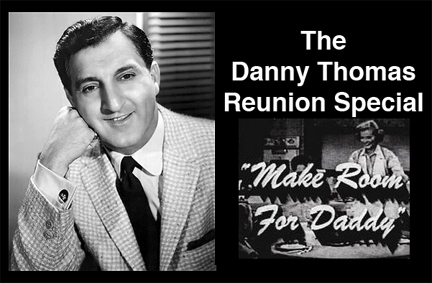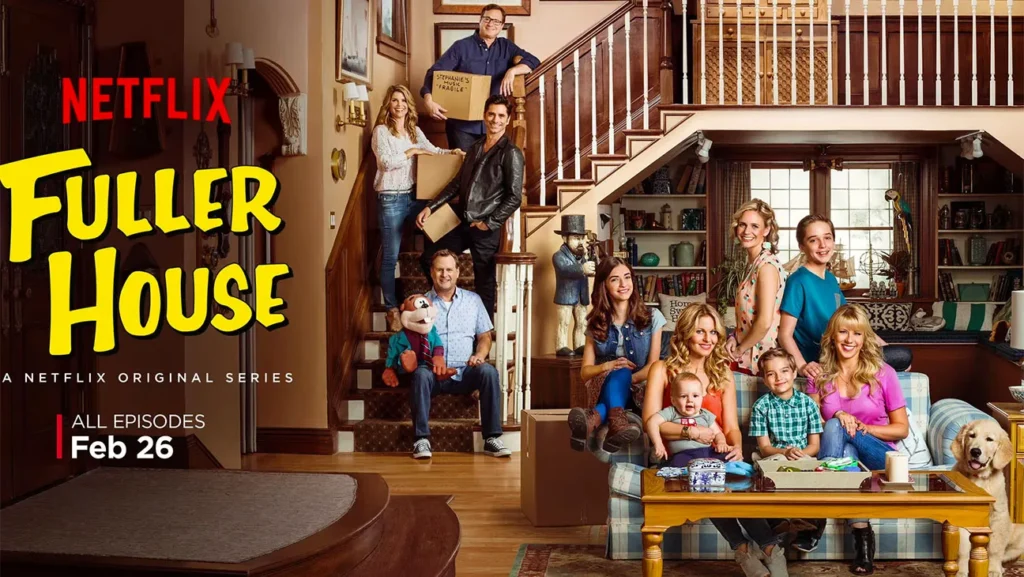The reunion show has been part of the TV viewing experience since the 60s. In many ways, a reunion is an encore, a last hurrah that lets old fans see their favorite characters one last time. Reunion shows continue to take place today, but these shows once seemed like far bigger events.
Television, of course, became common in households during the 50s. In that early frontier, TV shows were still finding their footing and many shows came and went abruptly. The first shows that featured genuine finale episodes didn’t even begin until the early 60s. The idea to offer viewers some aspect of closure caught on pretty quick after. And it’s here, at this step of endings that our topic can begin.
Let me make a quick distinction. There is a big difference between a cast reunion and a narrative reunion. A cast reunion gathers actors to sit around and speak about the good old days of filming. On the narrative side, the reunion show becomes a genuine update, a continuation of the previous story arc. My focus here is on the narrative side, for these reunions certainly hold a deeper complexity and require that creative teams approve of continuing the story from where it a show had previously been left.

The first reunion show aired in 1965. The Danny Thomas TV Family Reunion landed only one year after the prior series had ended. Hardly much time to miss characters, the show served mainly to spark interest for spinoffs. On a similar note, Dragnet 1966 somewhat awkwardly aired in 1969 and had the purpose of re-launching the prior 50’s detective series.


By the 70s, previously popular TV shows began to create reunions geared toward giving fans an update on characters…and of course, selling commercial time. Still, many shows that had been gone for a decade or more finally gave fans a taste of the power of reunions. The Addam’s Family, Gilligan’s Island, and The Honeymooners all got reunion specials. In case of the latter two, the success spurned several more encores. The reunion proved to be a real vehicle for hyping up viewers and for bringing together old and new generations. Reruns had of course become a big part of television, especially the shows which had a lot generational appeal.
As the 80s began, the reunion train kept picking up steam, and I was born too. Well, I can’t help but admit I had immense interest in TV reunions, even from a young age. From my perspective in the 80s, reunions got adults talking. I mean, I’d hear about these things at family events, from teachers at school, even from clerks at our town market. Even if I didn’t know about a particular TV show, I’d want to see the reunion based on hype alone. Keep in mind, TV was smaller in scope back then. Many people only had four channels (ABC, CBS, NBC, and PBS), and Fox network launched in 1986.

Every few months, an advertisement would boast about the “television event of a lifetime, the one not to miss, the reunion thirty years in the making,” etc. To name but a few: Little House on the Prairie, Leave it to Beaver, I Dream of Jeannie, The Brady Bunch, and even The Flintstones, an animated show, it had a hyped-up reunion.
To explain the surge, TV was young enough that many shows were reaching a perfect age to capture the nostalgia of the golden era when people first started watching. Another factor helping reruns capture the interest of new generation came in the spread of cable TV. Cable expanded in the 80s and 90s. Most cable channels also used reruns to help round out their original programming, and these further expanded awareness of older shows.

As the 90s hit, the ongoing gluttony of reunion shows aged a bit. Reunion shows shifted to give popular shows from the 70s their time in the spotlight. The unique reunion-friendly landscape also allowed some contemporary TV shows a form of redemption. Many shows which had faded from TV prior without a finale, for example, Alf, Macguyver, The Incredible Hulk, they and many others got made for TV movies which both served as a reunion and a finale.
As the 90s passed, I have to admit that I had immense optimism centered on my hope for a Seinfeld reunion show. It amazed me that the worst episode of a nearly perfect show happened with the finale. Alas, such a show didn’t fully materialize (yet at least). The 2000s proved times were changing for reunion shows. As mentioned, TV was once far narrower. As it broadened with new networks, the further expansion of cable, the idea of bringing people together with a reunion had less to gain. TV viewers had broadened their interests, and besides, the internet and social media began to take away some of the mystery and allure that so greatly defined a reunion. Though reunion shows continued to take place, many seemed to take the form of cast reunions, and the truly narrative reunions were fewer and further between. In all honesty, these cast reunions are often pretty forgettable, like the Friend’s reunion show from 2020.

It’s not as though the narrative reunions don’t still happen today. To a degree, they do. Some of the best lately have been when TV shows re-launch on streaming, often with spin-off shows featuring previously younger members of the previous cast. Full/er House, and Boy/Girl Meets World pulled this off well.
The broadening of entertainment and convenience of streaming has certainly dulled the impact reunion shows once used to make. In prior decades, it wasn’t always just about getting a cast back together. Past TV actors often had more of ability to step away from the spotlight. People just wanted to see their old favorite character the same as if seeing an old friend. I suppose I’d have to say maybe the best part about my memory of reunions wasn’t the actual show. It was that bringing together of interests, that hype and talk of everyone getting excited for something that was set to air at a specific time and place. It really was just about having something in common one last time with characters viewers had become so invested in. That was definitely the best part.
